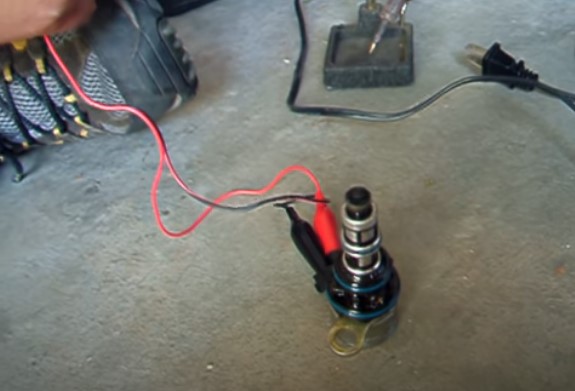The Chrysler/FCA third-generation Hemi boasts advanced technology like the Multiple Displacement System (MDS) to enhance fuel efficiency. However, the MDS solenoid, a crucial component of this system, can sometimes pose challenges. In this comprehensive guide, we’ll delve into the signs of a malfunctioning MDS solenoid and explore effective solutions.
Contents
Detecting the Telltale Signs
1. Ticking Noise: An Ominous Symphony
One unmistakable indicator of a faulty MDS solenoid is a ticking noise emanating from the engine. Owners often discover this issue when their Hemi MDS-equipped vehicles visit the dealership due to the mysterious ticking. The absence of a dashboard indicator for MDS activation makes this acoustic alteration a key diagnostic tool.
2. Misfiring Woes: Unraveling the Code
Engine misfires can signal a problematic solenoid. The onboard diagnostics system may throw a code, directing attention towards the solenoid. While other culprits like coil packs and plugs can cause misfires, eliminating these possibilities might point directly at the MDS solenoid.
3. Lifter Problems: The Internal Symphony
Internal issues can trigger MDS solenoid troubles. Using a stethoscope on the engine’s top, owners can identify abnormal noises indicating internal problems. Specific diagnostic trouble codes (DTCs) like P300, P301, and P308 can further confirm an engine problem, prompting a closer inspection of the MDS solenoid.
4. Unpredictable MDS Activation: On and Off Roulette
A reported symptom is the random activation and deactivation of the MDS. A damaged solenoid disrupts cylinder functionality, necessitating the replacement of the unit. If you own a Chrysler/FCA third-generation Hemi engine, remain vigilant for these signs.
Taking Action: Remedies for Bad MDS Solenoid
1. Addressing Exhaust Leaks: A DIY Fix
In some cases, exhaust leaks contribute to MDS solenoid issues. Fortunately, resolving this problem is both straightforward and cost-effective. Follow these steps:
- Obtain FiberFix heat wrap.
- Clean the exhaust using a wire brush.
- Immerse FiberFix in water for 40 seconds, removing excess water.
- Wrap it around the exhaust leak, ensuring proper resin application.
- Secure with metal tape.
- Allow the vehicle to run for an hour.
2. Tuning Out the Vibrations: Introducing the Tuner Solution
To counteract vibrations associated with the multi-displacement system, acquiring a tuner is a strategic move. This device can deactivate MDS in the powertrain control module (PCM), preventing the reporting of MDS-related codes.
03. Opting for Non-MDS Lifters: A Strategic Move
When faced with MDS solenoid issues, consider a switch to non-MDS lifters as an alternative solution. This step is particularly relevant if you’ve already replaced MDS lifters with their non-MDS counterparts. Conduct a thorough inspection of the lifters; if they’re all non-MDS, you can skip reinstalling the MDS solenoids. Instead, invest in a Diablosport tuner to disable MDS in the PCM, preventing the logging of MDS-related codes.
If your vehicle runs smoothly without the solenoids, it confirms the replacement of MDS lifters. These non-MDS conversion lifters are a popular choice among Hemi owners aiming to boost performance and eliminate the mechanical uncertainties associated with MDS lifters.
To execute this conversion, acquire new non-MDS lifters and retainers, along with four plugs (Mopar part No. 53032221AA) to block the solenoid installation points. Accessing the lifters requires removing the heads, necessitating a head gasket set, front timing cover gasket, head bolt set, and an ECM flash to eliminate MDS. Despite a potential minimal loss in fuel economy, this conversion proves beneficial in the long run, especially as MDS-equipped Hemi engines age.
04. Replacing the Solenoid: Demystifying the Process
While solenoid replacement may seem daunting, understanding the process simplifies the task. Follow these steps for a seamless replacement:
- Use a special connection on the wiring harness to probe without causing damage.
- Bypassing all connections might be time-consuming, but it’s less so than pulling the intake manifold for solenoid testing.
- Disconnect wires, EGR, vacuum lines, and remove fasteners holding the manifold down.
- Once the MDS solenoids are visible, disconnect the wire and test the solenoid with a multimeter. The service manual suggests that if resistance is less than 5 ohms, the solenoid is faulty.
- A helpful tip: Tap the top of the old solenoid with a rubber mallet to avoid damage.
Is Replacing an MDS Solenoid Typically Expensive?
Indeed, replacing an MDS solenoid can be a challenging task, not just because the intake has to come off, but also due to the solenoid often breaking apart during removal. The cost involves around $50 for the part and an additional $500 for labor. Keep in mind that Chrysler recommends using 5W-20 motor oil, and aftermarket exhaust systems may affect the transition from eight to four cylinders, causing noticeable changes for the driver.
Chrysler’s Multi-Displacement System (MDS) is a groundbreaking technology, but it comes with its set of challenges. MDS solenoid problems can be managed by staying vigilant and addressing issues promptly. By understanding the symptoms and exploring effective solutions, you can navigate the complexities of MDS-related issues and keep your Hemi engine running smoothly.
Read more:
